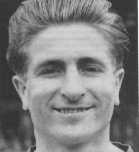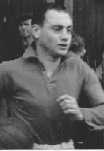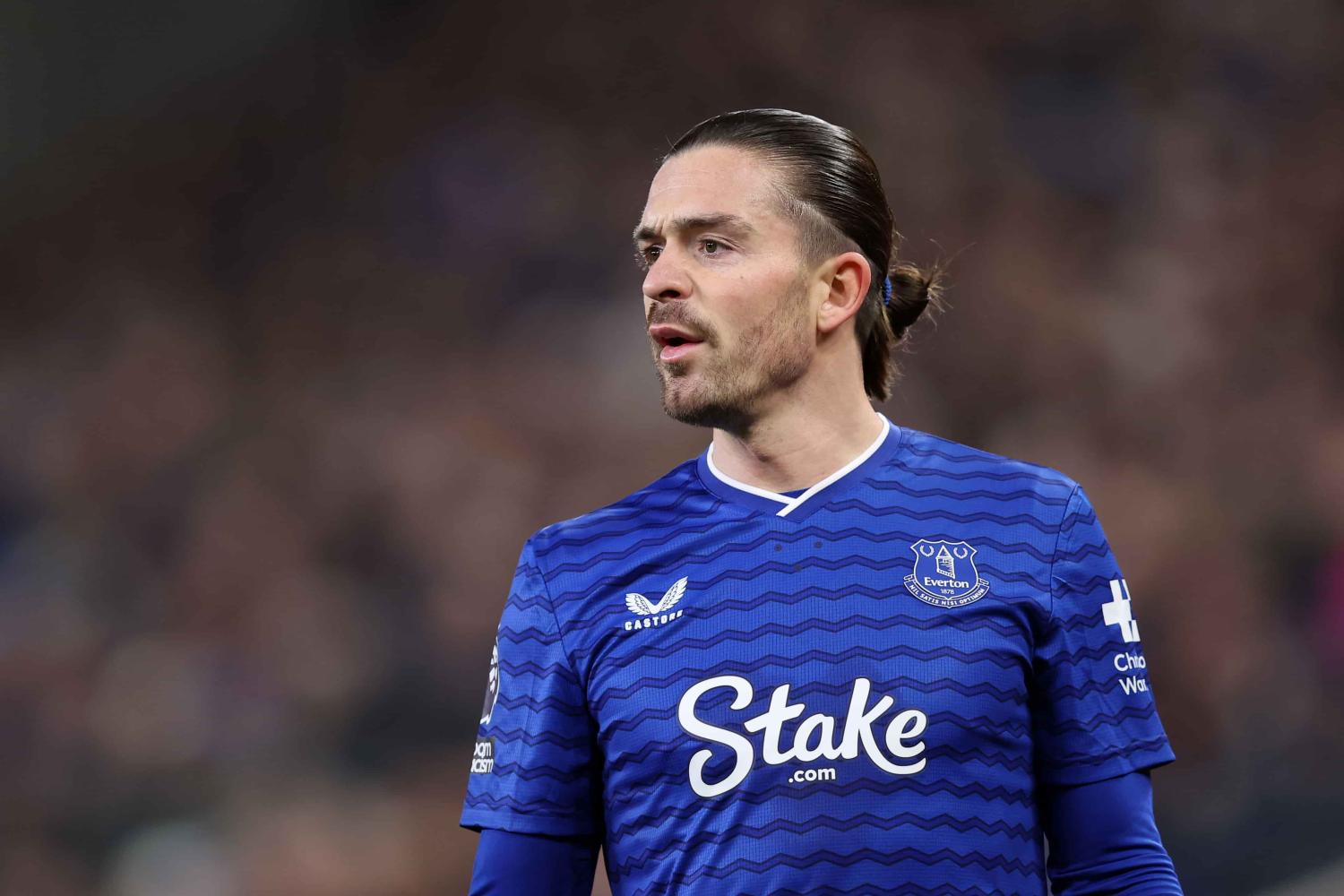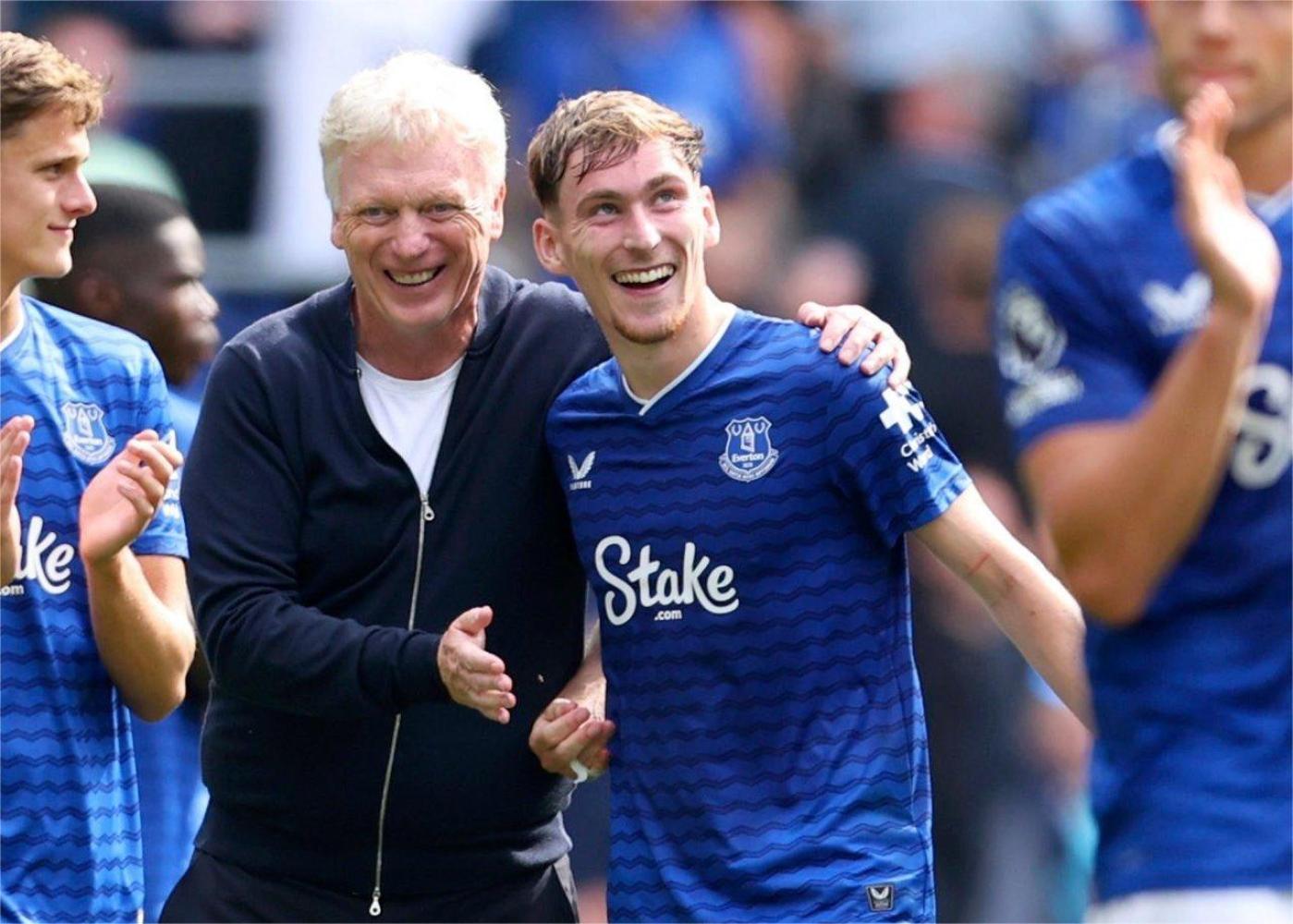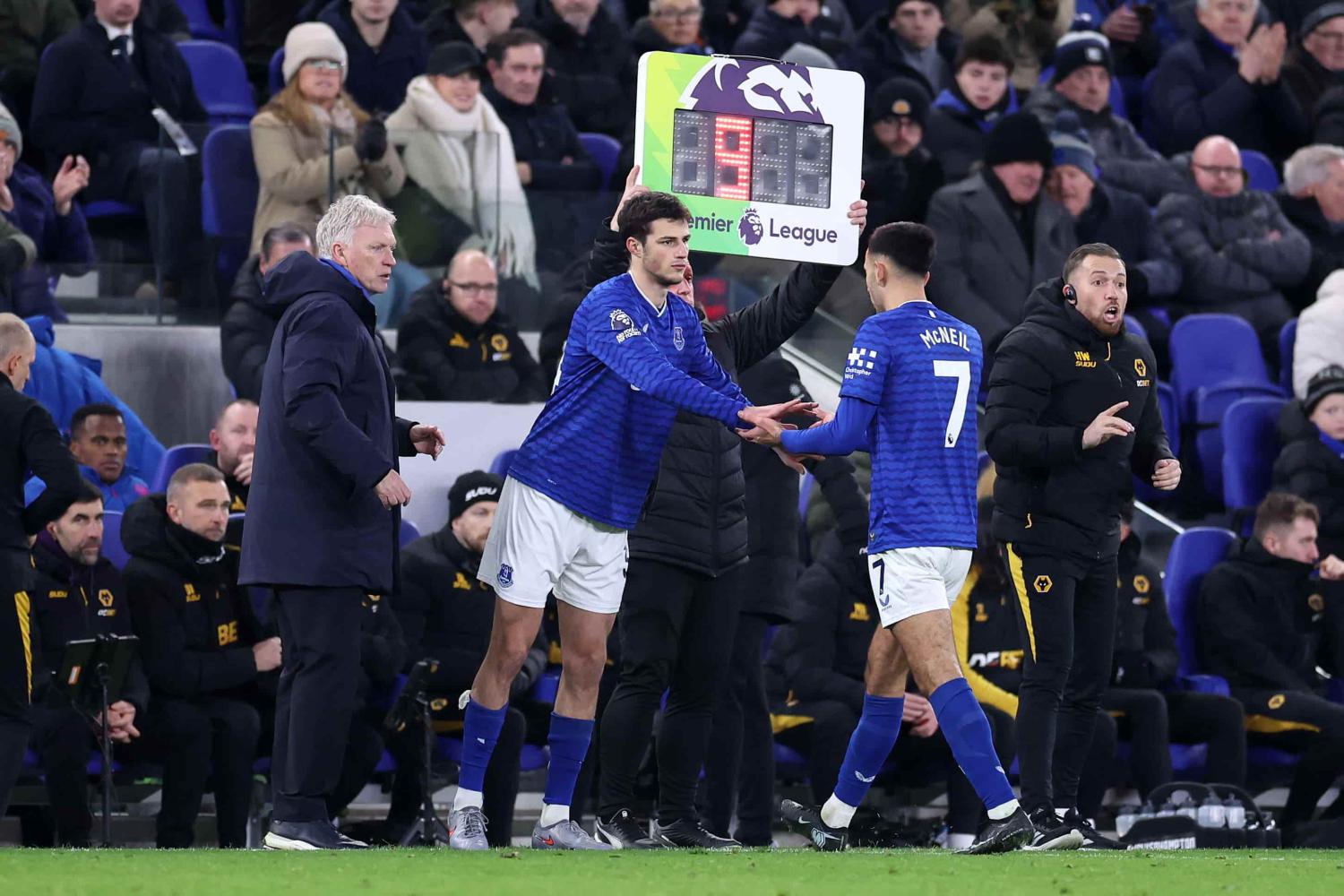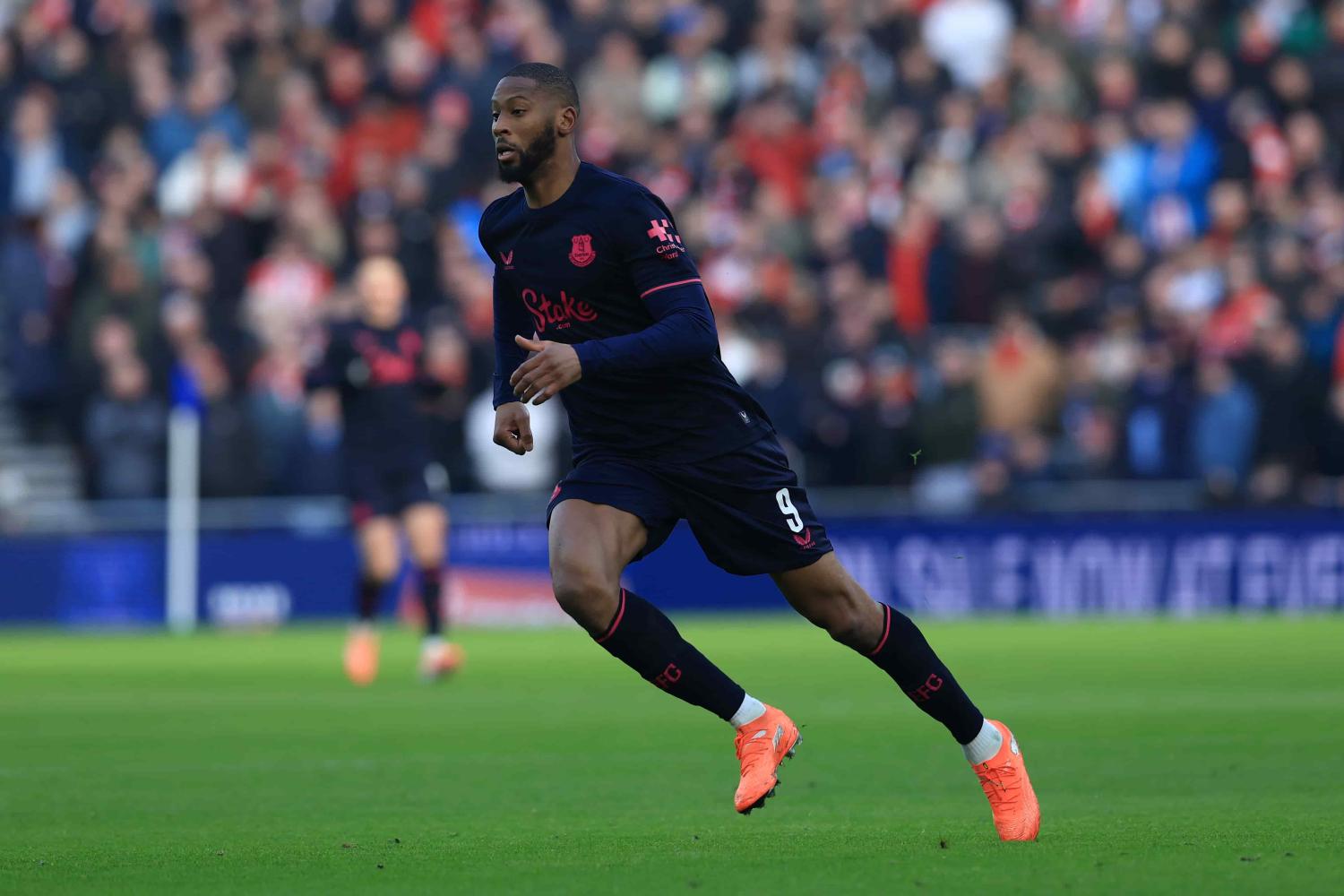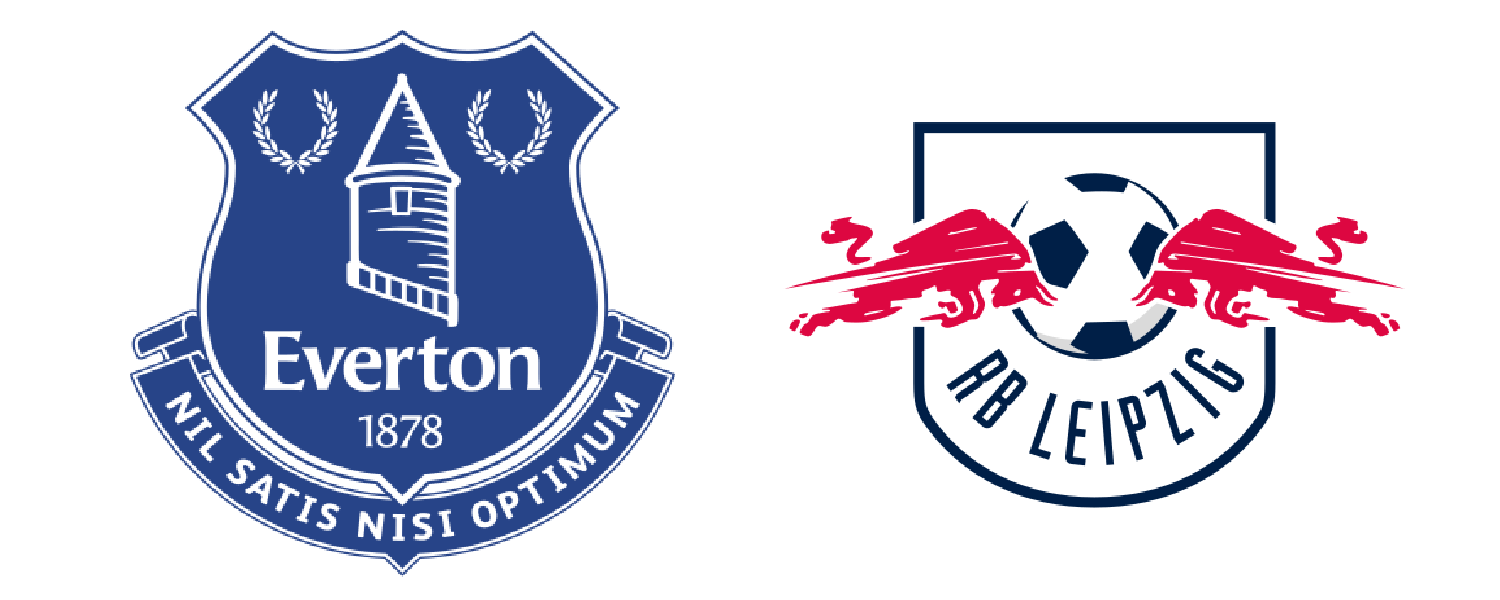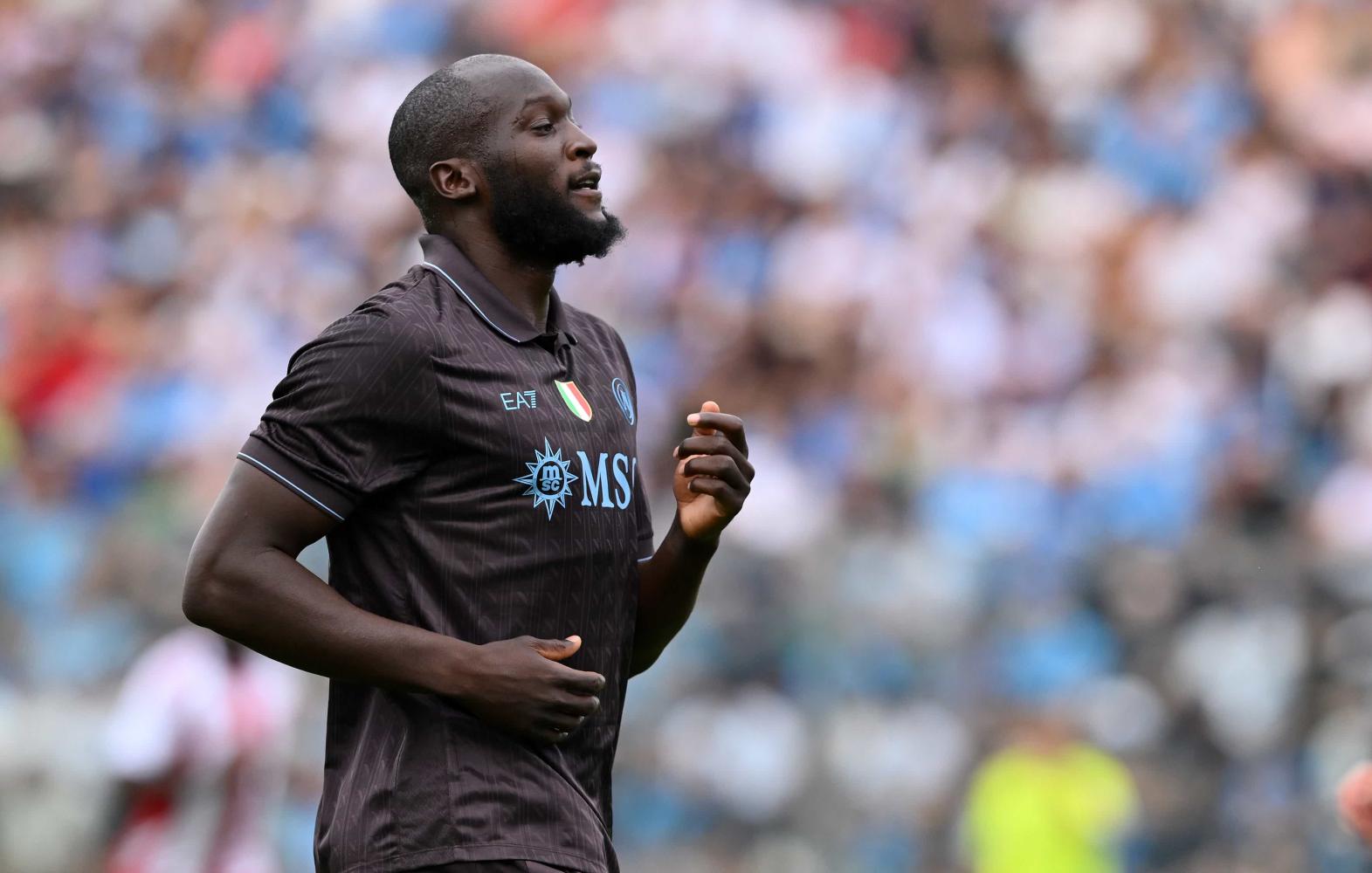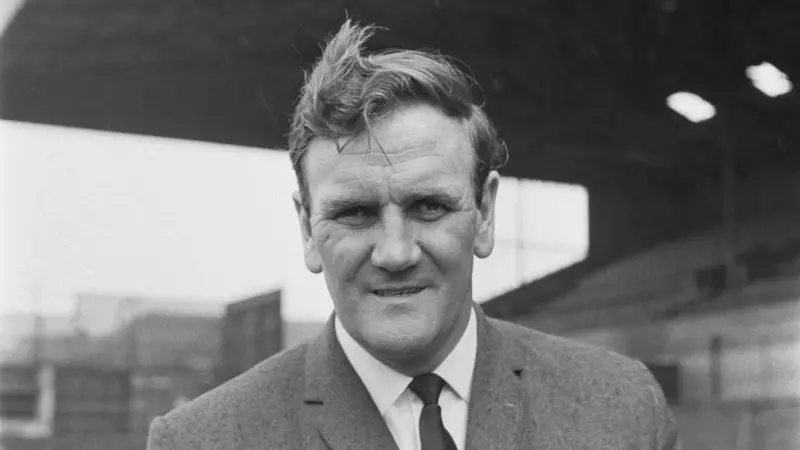IV: THE BAD DECADES (1945-61) |
LAWTON'S DEPARTUREMost of the players in that fabulous title-winning pre-war team were just at the start of their careers, so it was a real pity that the war destroyed one of the best Everton sides ever. Many even think that the 1938-39 title-winning team was the best Everton have ever had. In fact, only Mercer and Sagar were able to continue where they left off in 1939, and only Sagar did so at Everton. The aspirations of many footballers were frustrated during wartime and Tommy Lawton's career was most damaged: one can only wonder what he would have achieved without the war. Lawton was 19 when the war broke out. When the League was resumed in 1946, the 26-year old Lawton wore a blue uniform again ... Chelsea's.
In 114 wartime regional matches, Lawton scored 152 goals! But Tommy Lawton couldn't settle in, so he probably would have moved earlier without the war. In autumn 1945, after the war had ended, Crystal Palace, Nottingham Forest, Arsenal and Millwall were after him. In November 1945 Lawton signed with Chelsea for a new record fee of 11,500 pounds, and Everton's monopoly of god-like centre forwards was over. Lawton only played one season with Chelsea, scoring 28 goals in 34 matches before sensationally moving to the Southern Third Division team Notts County for a new record fee of 20,000 pounds. The move was simply something one can't understand. Nowadays, it would be like Shearer moving to Rochdale for 4 million!
After helping Notts County to a promotion, Lawton moved to Brentford as
player-manager, before returning to the First Division as an Arsenal player.
Lawton retired in the age of 37. Life wasn't exactly sweet for him, and Everton
arranged a testimonial match for him in 1972. After the match, Lawton said
he regretted leaving Goodison: "My God, why did I ever leave Everton? So
much of me still remains at Goodison." HARRY COOKE - THE GRAY ONEJoe Mercer fell out with Everton manager Theo Kelly so badly, that he accepted an offer from Arsenal in December 1946. Everton got 9,000 pounds and Arsenal perhaps the best English left-half ever seen. Mercer won both the FA Cup and the Championship title with Arsenal. After he finished his playing career, he came to fame as the manager of Manchester City in the late 1960's. He took City to the Second Division title in 1966, the League Championship in 1968, a cup victory in 1969 and the League Cup in 1970! In 1974-75, Mercer became the manager of England for six matches. There is one other person we need to point out from the pre-war team, Harry Cooke. His title was trainer, but he was also the physio, and his "magical sponge" revitalised any player. Cooke whole life was Everton Football Club, and he was a father-figure for the players. Cooke worked for Everton over fifty years.
So this was the end of the first golden era, when Everton had the reputation
of playing entertaining and technical football and were very successful,
living up to the names "School of Science" and "School of Excellence". THE SLIM DECADESThe years after the war, at the end of the forties and the start of the fifties, are the worst times in the history of Everton. Everton were relegated after the 1950-51 season for only the second time (and the last!) to the Second Division. This time it wasn't an accident, and it took more time to get back than in 1930-31. It took three seasons before the team got back to the top-flight in 1954 as the runners-up. Promotion was not decided until the last match of the season, when the Toffees beat Oldham away 4-0.
Everton still managed a few fine cup fights in 1953, when they beat Manchester United 2-1 with a goal from the new Goodison idol, Dave Hickson. Hickson had a big wound in his head when he scored, but the fearless Hickson didn't care. Everton went all the way to the semifinals, where Bolton, led by the legendary Nat Lofthouse, beat Everton 4-3. Bolton were 4-0 up at half-time, and Everton had missed a penalty. Bolton lost 3-4 to Blackpool after leading 3-1 in a unforgettable final that is known as the "Stanley Matthews final". In 1953 goalkeeper Ted Sagar retired at the age of 41, having played 463 matches, setting a League record of 24 years as a professional with the same club.
favourites during this era at Goodison Park were the Irish winger Tommy Eglington, who played 394 matches for Everton, the tricky inside-forward Walley Fielding, Eddie Wainwright, and Peter Farrell, who was also an Irishman. Farrell had joined Everton from Shamrock Rovers in July 1946, in a joint deal with Eglington for 10,000 pounds. Farrell played 422 league matches for Everton, – one of the biggest totals in Everton's history. Farrell was the captain for years. Other favourites included Dave Hickson (an Andy Gray type who recently captained the Everton Legends in a curtain-raiser at Wembley just before for the 1995 FA Cup Final) and his challenger, Jimmy Harris, who could also play in the wing. A few years ahead of Everton's new resurgence in the sixties, the midfield was led by Bobby Collins "The Little General", the Alan Ball or Peter Reid of his time. |
| « Between the Wars | Catterick's Time » |
|
|
||
| F I II III IV V VI VII VIII IX X B | The Bad Decades |


